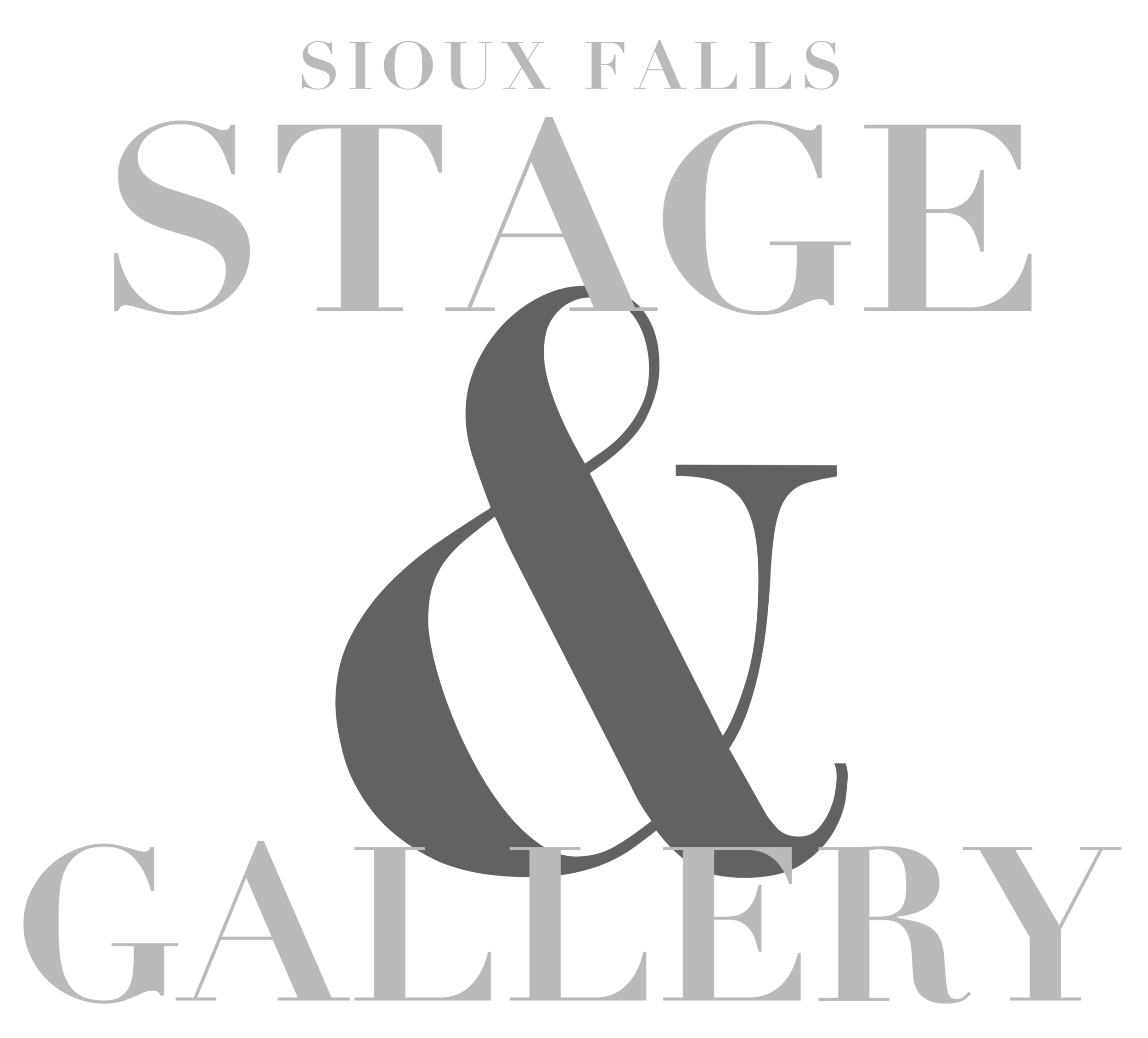Removing the Barriers
One gallery door closes, and another, quite literally, opens. When the Sioux Falls Arts Council (SFAC) had to pick up and move home-bases, one of the things the organization had to part with was its small gallery space. But thanks to a new partnership, a local-first venue for visual artists has taken shape in the Washington Pavilion.
“I think we looked at ourselves as a smaller community gallery for emerging artists or those just starting off,” SFAC executive director Kellen Boice said of the former space. “At our old location of about nine years, we had something called the Community Gallery. But right before the pandemic, we’d changed it to the Flux Gallery.
“The last two shows we had there were the direction we’re going now with the Shultz Gallery—experimental art or artists who aren’t really known in the community, having their toe in the water a bit and maybe exploring some things they wouldn’t normally have explored on their own.”
The Shultz Gallery was borne out of conversations between Boice and Washington Pavilion Visual Arts Center curator Cody Henrichs, who saw an opportunity to take down what is often seen as a barrier between local artists and the Pavilion’s gallery spaces.
“One of the key things that I think our museum lacks is diversity, equity and inclusion,” Henrichs said. “To me, when I look at the programming Kellen has put together at their former space at the Arts Council, she has a better ear to the ground. There’s this weird kind of funnel that happens with the museum practice, which is that I’m only encountering artists who have MFAs or are established. Because of the way that she has access to the community, she gets to meet a lot of artists who are working toward that or have it but aren’t already part of the intrinsic system.”
It’s through diversifying the curation and drawing additional voices into the conversation that Henrichs hopes to open the door for artists who perhaps haven’t felt they had access to the Pavilion’s resources in the past.
“The Pavilion controls something like 80-85 percent of the exhibition space in Sioux Falls, so it’s just not good or healthy for one person to be at the center of that, so my goal is always to have inclusion. And the need fit the opportunity.”
And it goes beyond merely accessing what the Pavilion has to offer for an artist’s CV—it’s about exposure and truly valuing the work being done by local artists.
“In the past, we’d never been able to pay an artist to show their work in our space,” Boice said. “We’re able to now provide a stipend to these artists to create new work or frame their current work. That was an important component for this—providing that stipend—as well as extending the length of time they show their work from the two-month span in our former gallery to now four months.”
This opportunity for capacity-building is something both collaborators prize for future artists to be featured in the Shultz Gallery—with around 45,000 visitors to the Pavilion’s galleries in the past 10 months alone, it’s a substantial amount of eyes on work that might not otherwise be seen.
“I think that there’s a public perception, for some, of inaccessibility,” Henrichs said of the Pavilion’s reputation among local and regional artists. “There might be a good percentage of the population that might think, ‘That’s not a place for me.’ They might not feel welcome. And that’s fiction, and this offers an opportunity, directly or indirectly, to say that this is a venue that has to be approachable and has to belong to the people.
“One of the ways to do that is by diverting authority and diverting power of choice. And so far as Kellen and the board of the Arts Council have their absolute autonomy in selecting exhibitions, suddenly there’s this other voice injected into the museum—not the voice of the institutional bureaucracy, but the authentic voice of what the people are wanting to see.”
Currently, the Shultz Gallery is featuring work by local artist and teacher Hilda Esperanza Langle, whose exhibition, “Donde Nacen Las Palabras: Where Words Are Born,” will be on display through October.
This repositioned gallery space is something that Henrichs hopes solves for a common problem in growing cities where arts are thriving and evolving, but the infrastructure isn’t always rising to the occasion.
“I think that the most challenging thing in every metropolitan—ours is not unique—is that professional exhibition space is hard to come by,” he said. “This is the trick of being a visual artist—you get shows by getting shows, and if you can only show in coffee shops, it’s hard to document your work, and it’s harder to place on your professional statement. It doesn’t have the backdrop of a traditional show.
“So it’s an opportunity—what we’re missing is a truly challenging contemporary venue that doesn’t have any restrictions and can show what is maybe compelling and challenging. That’s not necessarily going to be fulfilled by our space. What this space and this collaboration allows for more than anything is for artists to have a professional show, be treated with dignity and respect, be paid for their work and be able to put their work up in a safe space where people can come engage with the conversation.”
As far as Boice is concerned, this is only the beginning of a process to give visual artists more access to what the community has to offer, to show their work to a wider audience and to be compensated for their talents.
“This is just the toe in the water of things to come, as far as a space that’s not controlled by a single entity,” she said. “We work for the people, so we’re working for everybody. Access to more spaces—traditional gallery spaces that aren’t dual-role locations—at least for visual arts, that’s kind of the need.”

